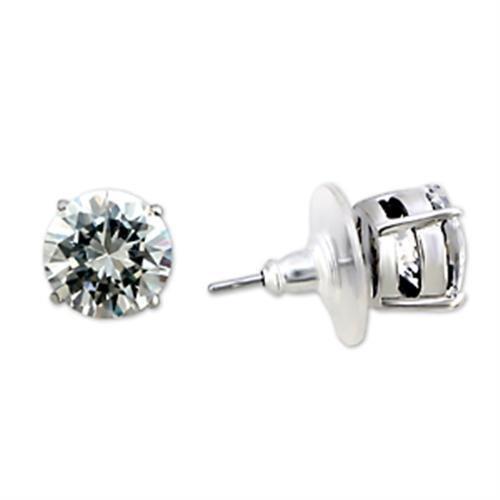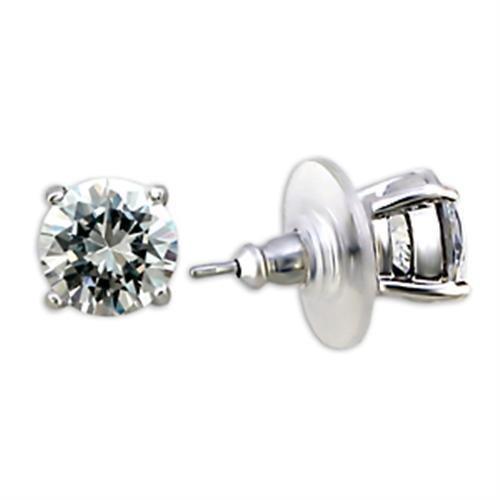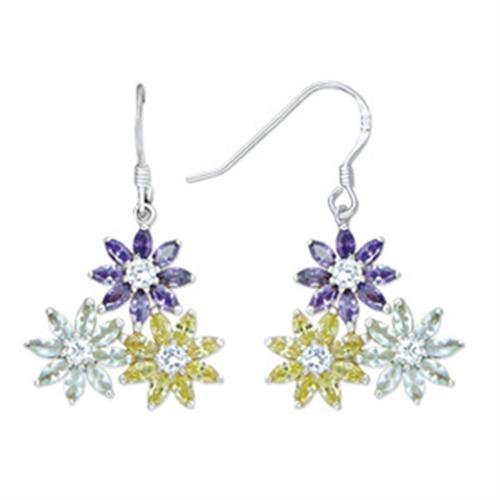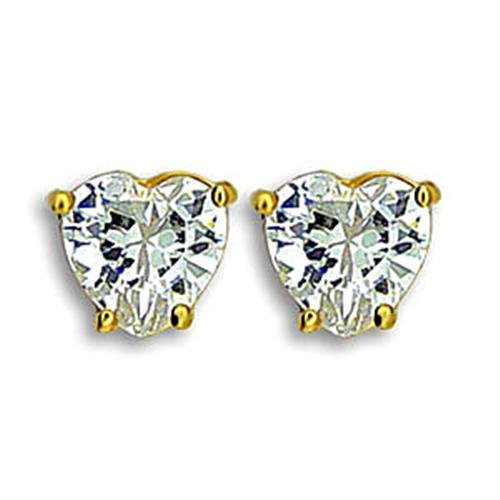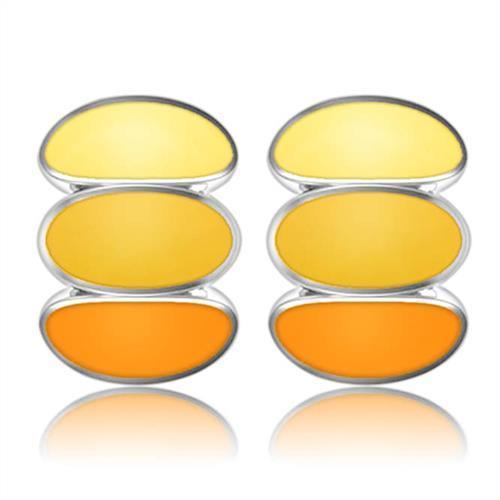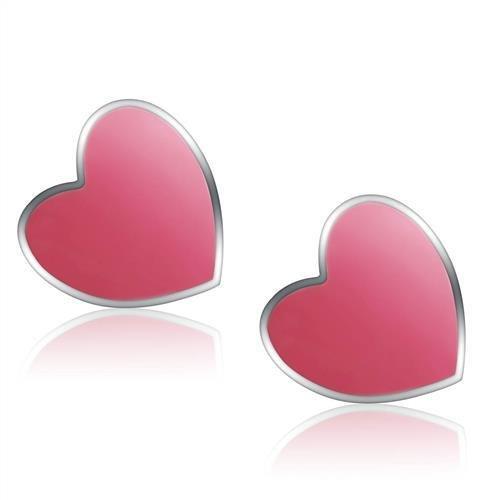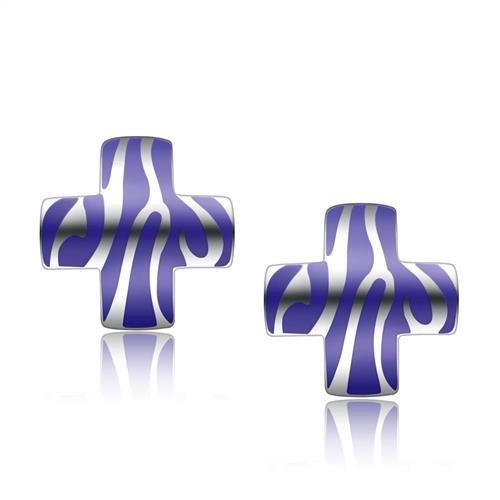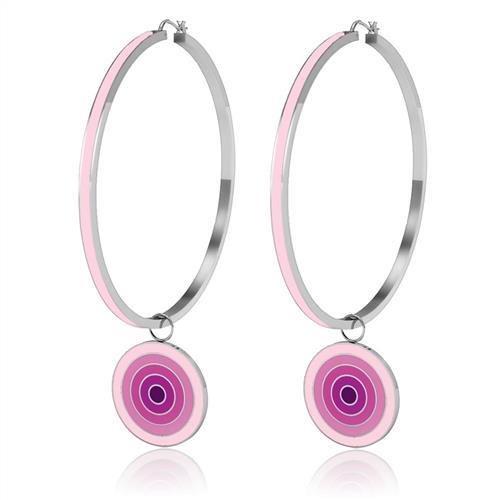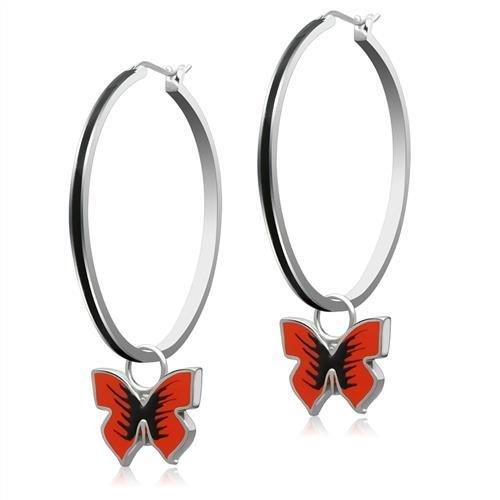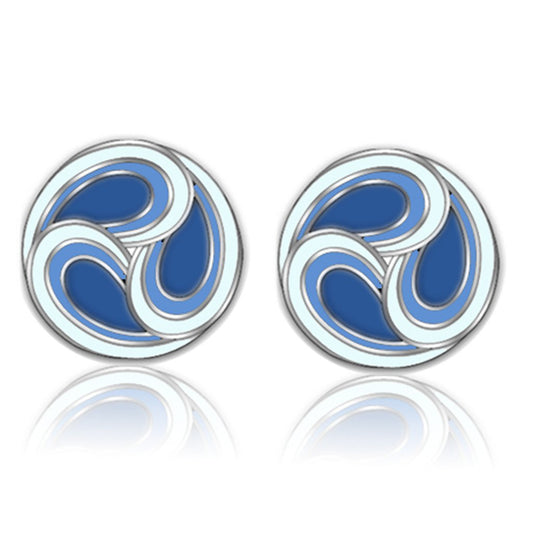Let's be honest, cleaning your silver jewelry feels like a chore, but it's really just simple chemistry. Tarnish isn't dirt you can just scrub away; it’s the result of a chemical reaction when silver meets sulfur in the air, creating that familiar dark layer of silver sulfide. The good news? With a little know-how and some everyday items, this reaction is totally reversible, and we'll show you exactly how to get that brilliant shine back.
The Real Reason Your Silver Is Tarnishing
Before you start polishing, it helps to know what you’re really up against. Tarnish isn’t just surface grime—it’s a specific chemical change happening right on your favorite necklace or ring. Understanding this is the secret to picking the right cleaning method and keeping your pieces sparkling longer.
The main culprit behind that dull, dark film is sulfur. When silver is exposed to sulfur compounds floating around in the atmosphere, it forms a new compound on the surface: silver sulfide. That’s the tarnish you see. If you want to get into the nitty-gritty of the chemistry, you can explore the science behind why sterling silver tarnishes and how to restore it.
Key Factors That Speed Up Tarnish
Some everyday things can put this tarnishing process into overdrive. So, what's making your silver tarnish so fast?
- Humidity: Think of moisture in the air as a supercharger for the chemical reaction between silver and sulfur. This is the single biggest accelerator.
- Air Pollutants: City living can be tough on silver. Environments with more pollution have higher levels of sulfur gases, which means faster tarnishing.
- Everyday Items: Be careful what your silver touches. Things like wool, rubber bands, latex gloves, and even foods like eggs and onions contain sulfur compounds that will cause tarnish on contact.
This can happen surprisingly fast. It takes as little as 0.1 parts per billion of hydrogen sulfide in the air to kickstart the tarnishing process, especially when it’s humid.
The copper in sterling silver—usually about 7.5%—also plays a big part. Copper is more reactive than pure silver, which is exactly why sterling silver tarnishes more quickly than fine silver.
Getting a handle on these triggers is your first line of defense. Knowing what causes jewelry to tarnish helps you protect your pieces from the get-go. By simply controlling your silver's environment, you can dramatically cut down on how often you need to pull out the polish.
Safe Household Methods for Restoring Shine
You don’t need harsh chemicals or a pricey trip to the jeweler to get the tarnish off your silver. Believe it or not, your kitchen pantry probably has everything you need to bring back that brilliant shine. These methods are gentle, surprisingly effective, and work wonders on everything from sterling silver rings to heirloom flatware.
The whole reason your silver gets that dark, dull layer is a simple chemical reaction with the air around it. This handy infographic breaks it down.
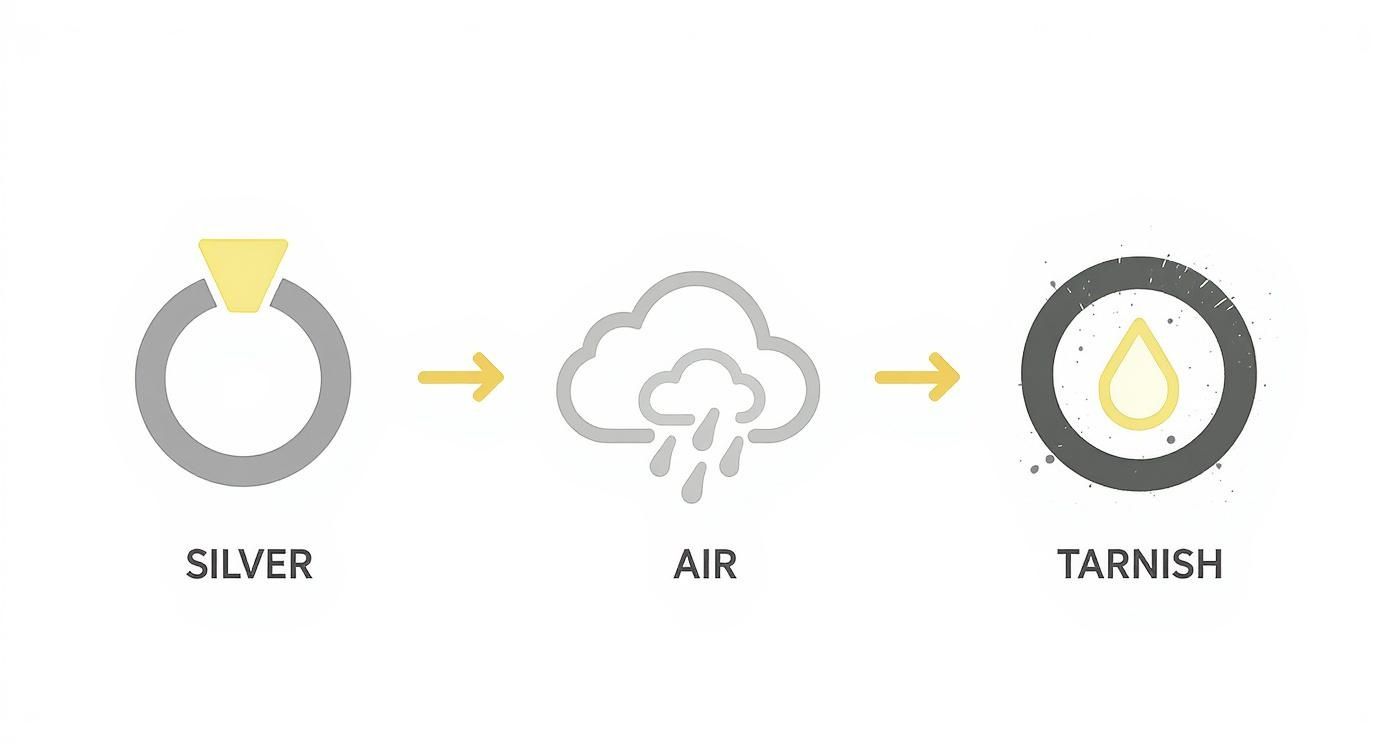
As you can see, it's the airborne sulfur that bonds with your silver, creating that dark silver sulfide layer we all know as tarnish. The good news is, we can reverse that reaction right at home.
The Classic Baking Soda and Foil Bath
One of the coolest and most effective ways to remove tarnish involves a little bit of kitchen science. The baking soda and aluminum foil method creates a gentle electrochemical reaction that actually converts the silver sulfide (the tarnish) back into pure silver. It’s chemistry doing the work, not elbow grease!
This trick is a lifesaver for intricate pieces with lots of nooks and crannies that are impossible to reach with a polishing cloth. It’s also my go-to for moderately or even heavily tarnished items that need a serious refresh.
Here's what you'll need to get started:
- A dish or bowl lined with aluminum foil (make sure the shiny side is up)
- Hot water (steamy, but not boiling)
- Baking soda (about 1-2 tablespoons for every cup of water)
- A non-metal utensil to give it a stir
Just lay your silver items so they're touching the foil at the bottom of the dish. Pour in the hot water and baking soda mixture, and you’ll literally see the tarnish start to vanish within minutes. Once clean, rinse thoroughly and dry completely with a soft cloth.
Pro Tip: Steer clear of this method for any jewelry with porous gemstones. Pearls, opals, turquoise, and coral can be permanently damaged by the heat and the solution. This one is best reserved for solid metal pieces.
A Gentle Paste for Minor Touch-Ups
For lighter tarnish or smaller items, a simple baking soda paste gives you a lot more control. I use this approach all the time for a quick polish when I notice a piece starting to dull but it doesn't quite need a full deep-clean.
Just mix two parts baking soda with one part water until you have a thick paste that won't run. Apply it with a soft cloth or even just your fingers, rubbing gently in straight, back-and-forth lines—never in circles, as that can create tiny scratches.
Rinse the piece really well with warm water and, most importantly, dry it completely with a microfiber cloth to prevent water spots.
This targeted approach is perfect for cleaning specific spots without submerging the whole piece. It’s the ideal way to keep your favorite Precious Pulse Jewelry looking its best between wears.
DIY Silver Cleaning Method Comparison
Not sure which at-home method to try? This quick guide breaks down the best uses for each, so you can pick the right technique for the job.
| Method | Best For | What You Need | Cautionary Note |
|---|---|---|---|
| Baking Soda & Foil Bath | Heavily tarnished items or pieces with intricate details and crevices. | Aluminum foil, baking soda, hot water, non-metal bowl. | Avoid using on pieces with soft or porous gemstones like pearls or opals. |
| Baking Soda Paste | Light tarnish, quick touch-ups, and targeted spot cleaning. | Baking soda, water, soft cloth. | Rub gently in straight lines, not circles, to prevent micro-scratches. |
| Toothpaste (Non-Gel) | Mild tarnish on sturdy, non-plated silver without fine details. | White, non-gel/whitening toothpaste, soft brush, cloth. | Can be abrasive; use sparingly and test on a small spot first. Not for delicate items. |
| Lemon Juice & Olive Oil | A very gentle polish for adding shine to lightly dulled silver. | A few drops of lemon juice, ½ cup olive oil, microfiber cloth. | This is more of a polisher than a heavy-duty tarnish remover. |
Each of these household remedies has its place, from deep cleaning neglected pieces to providing a quick shine before a night out. Just remember to always be gentle and dry your silver completely when you're done.
Choosing the Right Commercial Silver Polish
Let's be honest, sometimes those DIY baking soda pastes just don't have the muscle for seriously stubborn tarnish. When you're dealing with years of buildup or a heavily oxidized piece, it's time to call in the professionals—commercial silver cleaners.
Walking down the cleaning aisle can feel a bit overwhelming, but picking the right product is all about matching the tool to the job. For example, trying to clean an intricate sterling silver chain with a thick paste is a recipe for frustration. This is where a commercial silver dip is a lifesaver, as it can dissolve tarnish from every tiny link without hours of scrubbing. But be warned, that same chemical power can be too harsh for other pieces.

And we're not alone in needing these solutions. The market for anti-tarnish products is booming, with the silver anti-tarnish cloth market valued at a massive $352 million in 2024 alone. It’s clear that people rely on these ready-to-use products to keep their silver looking its best. For a deeper dive into these numbers, you can check out this report on silver anti-tarnish products.
Polishes vs. Dips vs. Cloths
To get the best results, you need to know what you're working with. Each type of cleaner serves a very different purpose.
- Silver Polishes (Creams/Pastes): Think of these as your go-to for pieces with large, smooth surfaces, like a simple cuff bracelet or a silver tray. They contain gentle abrasives that physically buff away the tarnish while leaving behind a protective film. This method gives you the most hands-on control.
- Silver Dips (Liquids): Dips are the heavy hitters. They use a chemical reaction to dissolve tarnish almost instantly. They're perfect for detailed items with lots of nooks and crannies, like filigree earrings or complex chains where a cloth can't reach. Just use them quickly and sparingly—too much exposure can strip the silver's finish.
- Polishing Cloths: Every jewelry owner should have one of these. Treated with a special micro-abrasive agent, they're your first line of defense. They are absolutely perfect for routine maintenance, quick touch-ups before a night out, and bringing back the shine to lightly dulled pieces.
For your treasured Precious Pulse Jewelry pieces, a high-quality polishing cloth is the safest and best place to start for regular care. It's gentle enough to use often and is great for wiping away fingerprints and minor dullness before it turns into a bigger problem. Many fine jewelry pieces, including ours, come with one for this very reason.
No matter what you choose, always read the label first. This is especially critical for jewelry with gemstones or other delicate materials that could be damaged by harsh chemicals. When in doubt, always start with the gentlest option—the polishing cloth—and only escalate to stronger solutions if the tarnish won't budge.
How to Keep Your Silver From Tarnishing Again
You know the old saying: an ounce of prevention is worth a pound of cure. Well, when it comes to silver, it’s worth hours of polishing. The absolute best way to deal with tarnish is to stop it from ever getting a foothold.
By adopting a few simple habits, you can dramatically cut down on how often you need to break out the cleaning cloths. The goal is simple: limit your silver's exposure to the air and moisture that kickstarts the tarnishing process. Think of it as creating a safe little bubble for your jewelry.
Smart Storage Solutions
The secret to keeping silver bright is minimizing its contact with air and moisture. Your jewelry's biggest enemies are humidity and airborne sulfur, so a cool, dry, dark place is its best friend.
- Airtight Containers: This is your first and best line of defense. Storing each piece in a small, airtight plastic bag is honestly one of the most effective things you can do. A dedicated jewelry box with individual, felt-lined compartments works great too.
- Anti-Tarnish Products: For extra protection, toss an anti-tarnish strip into your storage container. These little tabs are like magnets for sulfur compounds, absorbing them before they can ever reach your jewelry.
- Specialized Cloths: You can also wrap individual pieces in a tarnish-resistant cloth. These are chemically treated to neutralize the corrosive elements floating around in the air.
The whole idea is to create a micro-environment for your jewelry that's free from the pollutants that accelerate tarnishing. It doesn't have to be fancy—a simple ziplock bag can work wonders.
Everyday Habits to Adopt
How you wear your jewelry is just as important as how you store it. So many everyday products are loaded with chemicals that can cause tarnish to appear almost instantly.
Making a couple of small tweaks to your routine can make a world of difference. The golden rule? Your jewelry should always be the last thing you put on and the first thing you take off.
Always apply your lotions, perfumes, makeup, and hairspray before putting on your silver. Those products are packed with chemicals that will react with the metal.
And at the end of the day, take your jewelry off before you do anything else. That means before you hop in the shower, go for a swim, or even wash your hands. Chlorine from pools is especially harsh, but even the minerals in regular tap water can dull your silver's shine over time.
For a deeper dive into daily care, our guide on how to care for sterling silver has even more tips. Following these simple rules will genuinely save you countless hours of future polishing.
Cleaning Silver With Gemstones and Delicate Details
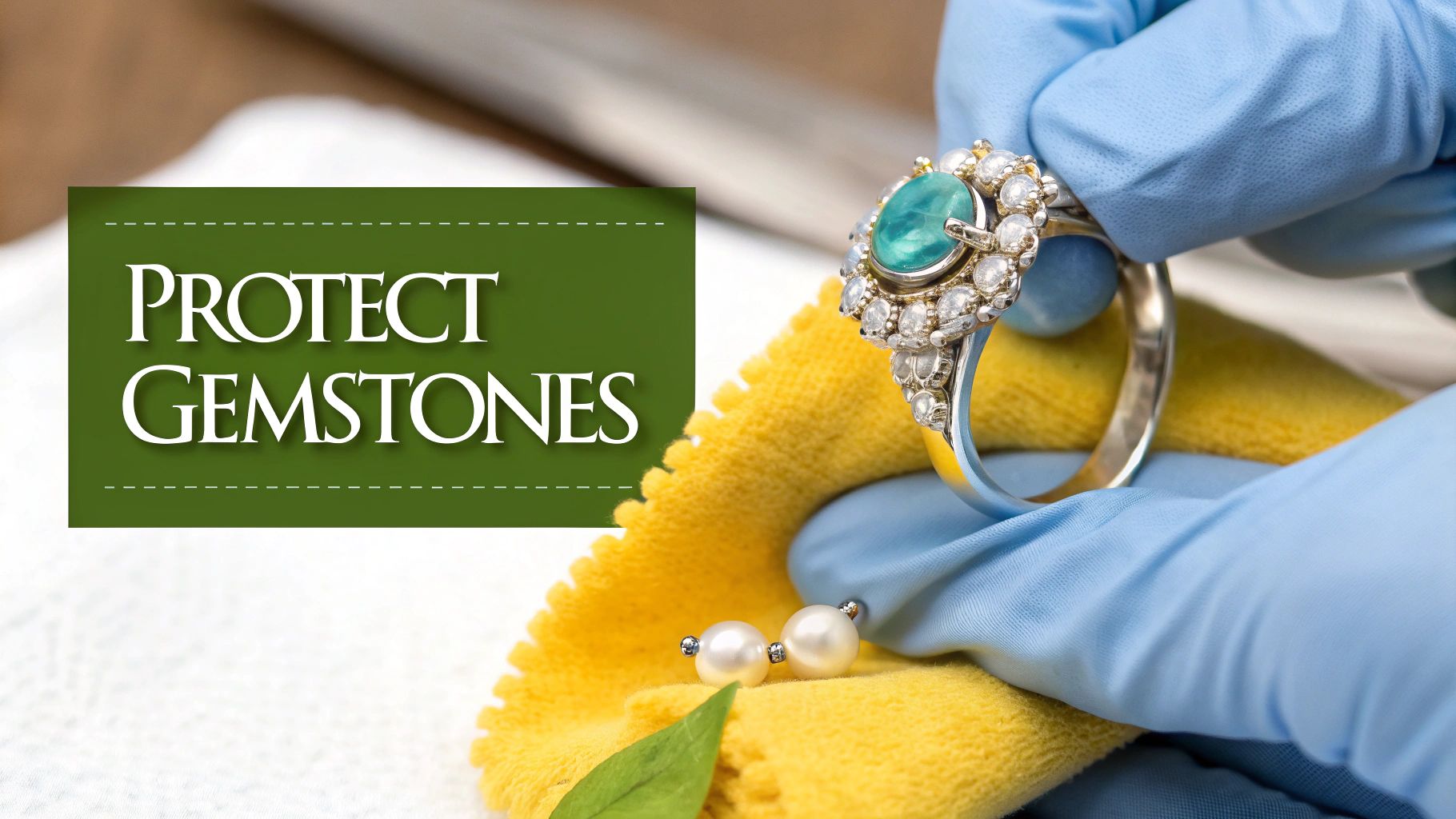
So, what about that beautiful sterling silver ring with the turquoise inlay? Or the heirloom pearl necklace clasped with silver? When your jewelry features gemstones or other delicate details, you have to throw the standard cleaning rulebook out the window.
Harsh chemical dips and abrasive pastes that work wonders on solid silver can be a death sentence for delicate stones. Pearls, opals, amber, and turquoise are especially vulnerable and can be permanently damaged by submersion or aggressive scrubbing. You simply can't take that risk.
The secret here is a more targeted, careful approach. Your best friend in this scenario is a high-quality silver polishing cloth.
Use it to meticulously work around the gemstone settings, focusing only on the metal to lift away the tarnish. This method gives you complete control, ensuring you never actually touch the surface of the stone itself. It takes a bit more patience, but it’s the only way to clean these hybrid pieces safely at home. For light cleaning, a soft, damp cloth with a single drop of mild, pH-neutral soap can be used on the metal, followed by immediate and thorough drying.
When to Pause and Reconsider
For soft or porous stones, even the gentle friction from a cloth can be too much. My personal rule of thumb is simple: when in doubt, don’t risk it. This is especially true when you're dealing with a valuable family heirloom or a piece that holds deep sentimental value.
Tarnish isn’t just a cosmetic issue; it has real economic implications. It's estimated that up to 30% of silver products may need regular cleaning to stay in use, which really underscores the value of proper maintenance to protect both their beauty and function.
For those truly precious items, handing them over to a professional is always the safest bet. A jeweler has the right tools and expertise to assess the piece and use specialized techniques that protect both the silver and its delicate additions.
For more specific tips, you can explore our guide on how to maintain the quality of a gemstone pendant. And remember, choosing the right cleaner is everything—understanding the importance of pH neutral cleaners can help you avoid costly mistakes and keep your delicate pieces safe for years to come.
Answering Your Top Silver Tarnish Questions
When it comes to caring for sterling silver, the internet is full of conflicting advice. It can be tough to know what actually works and what might cause lasting damage. Let's clear up some of the most common questions we hear so you can keep your jewelry sparkling safely.
One of the biggest myths out there is the toothpaste hack. We get it—it sounds easy. But please, don't do it! Most modern toothpaste formulas contain abrasives that are great for your teeth but terrible for your silver. They create thousands of tiny scratches on the surface, which will permanently dull its shine over time. It’s far better to stick with a gentle method, like a simple baking soda paste or a soft polishing cloth designed for jewelry.
How Often Should I Clean My Silver?
This is a great question, and the answer really comes down to your habits—how often you wear a piece and, just as importantly, how you store it. There’s no single right answer.
- For your daily go-to pieces: A quick wipe-down with a soft cloth after each wear is a fantastic habit. It removes oils and moisture before they have a chance to react with the metal.
- For jewelry you wear occasionally: You’ll probably only need a deeper clean every few months, or just whenever you notice it starting to look a little dull.
- For properly stored items: If you keep your silver in an airtight bag with an anti-tarnish strip, you might only need to give it a quick check-up once a year.
The most important takeaway is this: When it comes to valuable or sentimental antique silver, it's always best to consult a professional jeweler. They can identify if the piece has a valuable patina that shouldn’t be removed and use techniques that won't decrease its value.
At the end of the day, a little proactive care is so much more effective than a major cleaning session. A few simple habits will keep your silver collection looking pristine for years to come.
Ready to find your next favorite piece? Explore the stunning and affordable sterling silver collection at Precious Pulse Jewelry and discover timeless designs you'll love to wear. Visit us at https://preciouspulsejewelry.com today.


